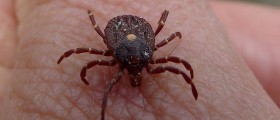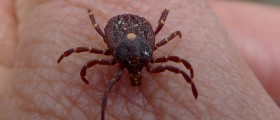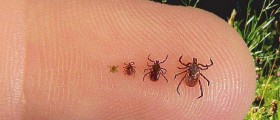
Lyme disease
There is evidence that Lyme disease was present for many years before it was first diagnosed in Connecticut in 1975. in the 19th century it affected mostly deer and small mammals, but when the settlers started deforesting large areas, the number of those animals was reduced and ticks turned to new hosts, humans.
Lyme disease can be found in all the states, but 85% of all cases of Lyme disease in humans occurs in the East Coast.
How is Lyme disease transmitted?
Ticks go through several stages in their life, going from egg to larva, then a nymph and finally becomes an adult.
After it hatches in the spring, a tick becomes larva which in summer feeds on small mammals, like a mouse. If the mouse was infected with Borrelia burgdorferi, the larva gets infected as well. The next spring it molts into a nymph, still infected, and feeds on another small mammal, a deer, a dog or a human, and transmitting the disease.
In order for a nymph or an adult tick to transmit the bacteria, it needs to be attached for at least 48 hours. After it is fully fed, it falls off. If the tick is discovered before the 48 hours have passed, there is a very high probability that the transmission of the infection has not occurred. It is also possible not to get infected even if the tick was attached for 48 hours or more. If the tick is detached before it is completely fed, it will search a new host.
Symptoms of Lyme disease in dogs
Lyme disease in dogs has different symptoms than in humans. Its onset occurs later, in two to five months after the bite by an infected tick.
Dogs may show several different forms of disease, but most commonly the symptoms are a fever of 103 or 105 degrees Fahrenheit, fatigue, lameness, swollen joints, swollen lymph glands, lethargy, loss of appetite.
Although it happens rarely, some dogs may have complications of Lyme disease affecting kidneys, which progress quickly and may result in death. This is why it is recommended that all dogs that are diagnosed with Lyme disease undergo additional analysis of urine and blood in order to exclude the possibility of kidney damage.
Another rare complication includes heart and nervous system problems.















Your thoughts on this
Loading...